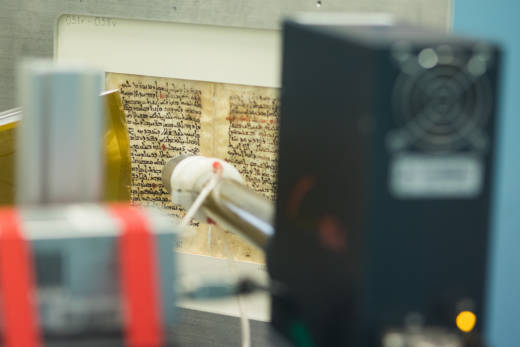A team of researchers have gathered at Stanford’s SLAC National Accelerator Lab this week in a high-tech treasure hunt.
Their quarry is a hidden text — a 6th century medical manuscript holding the writings of Galen, the Greek physician whose teachings dominated the practice of medicine for more than a millennium. Sometime in the 11th century the original writing was scraped off the parchment and overwritten. The newer writing, holding psalms for days of the week, is primarily what can be seen with the naked eye.
But the original writing isn’t necessarily gone. Some traces of ink may linger behind, waiting to be revealed by the Stanford Synchrotron Radiation Lightsource. At SSRL researchers study use high-intensity X-rays to study everything from fossils to batteries to large bio-molecules.
“That’s why we’re here at the synchrotron because the X-rays can pass through the ink and the parchment without any trouble at all,” says William Sellers, a scientist specializing in large data from the University of Manchester.
Sellers is able to take the data from the scans and shape it so scholars can read the underlying text. Fortunately, the old ink and the new ink respond to X-rays in slightly different ways, using a technique known as X-ray fluorescence imaging.
